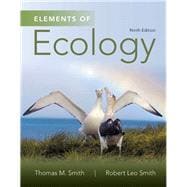Also available with MasteringBiology®
This title is also available with MasteringBiology, an online homework, tutorial, and assessment program that improves results by helping students quickly master concepts both in and outside the classroom. The book and MasteringBiology work together to create a classroom experience that enables students to succeed in biology and ecology courses.
Note: You are purchasing a standalone product; MasteringBiology does not come packaged with this content. If you would like to purchase both the physical text and MasteringBiology search for ISBN-10: 0321934172/ISBN-13: 9780321934178. That package includes ISBN-10: 0321934180/ISBN-13: 9780321934185 and ISBN-10: 0321976010/ISBN-13: 9780321976017. MasteringBiology should only be purchased when required by an instructor.









